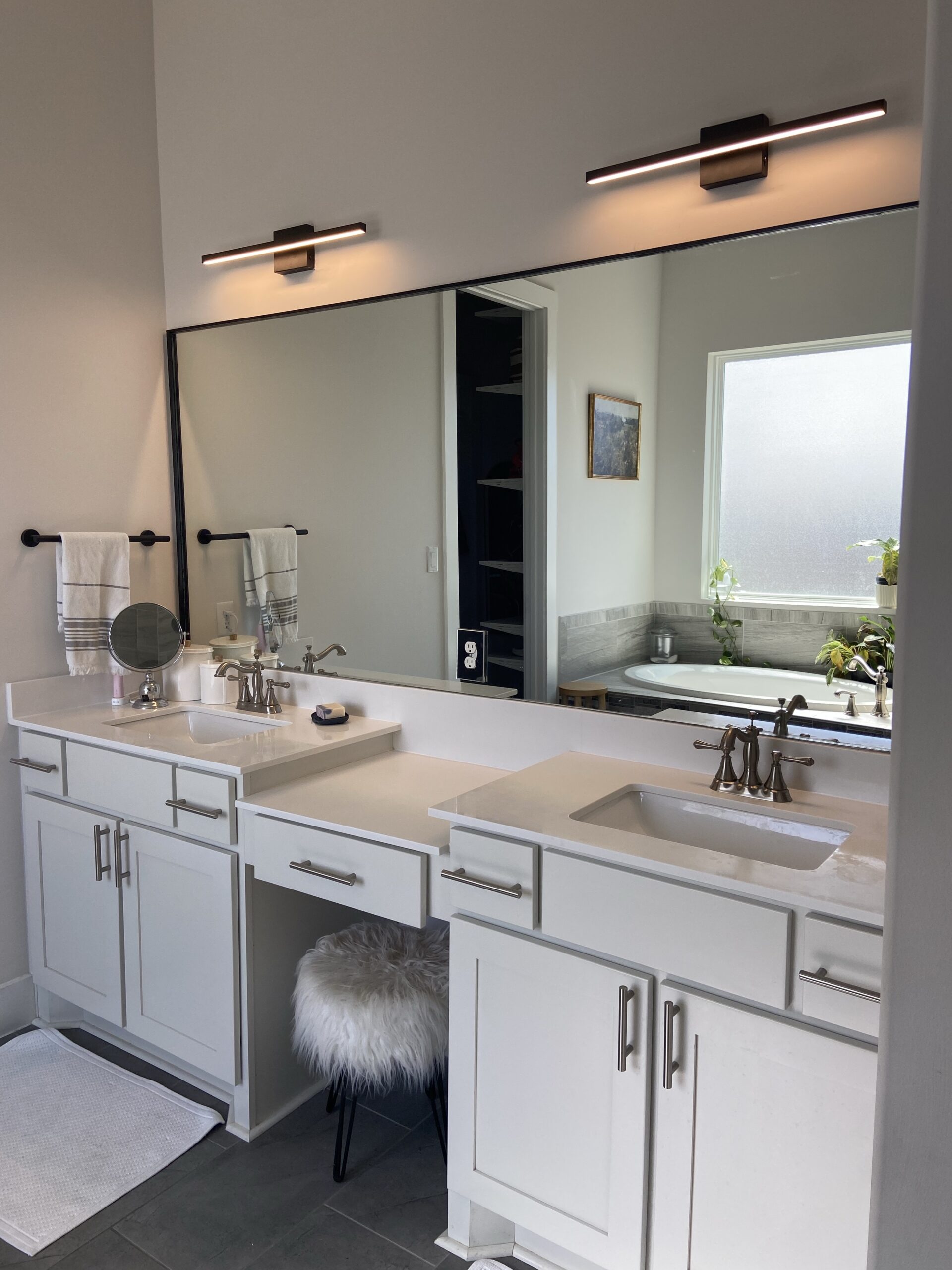With the new baby just around the corner it was time to update our oldest son’s bedroom. I wanted to do a single wall treatment behind his bed since we did an accent wall in his brother’s Shiplap Bedroom Makeover. Wood prices have sky rocketed lately, so I needed to find a project that fit our style without breaking the budget. I fell in love with the Wooden Slat Wall look. I wanted to create a wooden slat wall that looked great but did not cost an arm and a leg. Follow me on my oldest son’s bedroom makeover journey!
Wooden Slat Wall Supplies
We updated the bed in the room from a double to a queen. Since the wood was running behind the bed frame, I measured the width of the bed to calculate how many wood pieces I would need to complete the project.
The walls in our house are very tall! They are approximately twelve feet tall but since we have a baseboard in place the wall distance we needed to cover was just over 11 feet. 12 foot pine wood 1×2 boards are super expensive. There is no way I could afford to complete this project with 12 foot boards. I decided to purchase 6 foot 1×2 Select Pine boards to complete the wood slat wall. In order to make the boards work in the space, I ran 6 foot boards vertically. I cut down the remainder of the 6 foot boards I purchased and ran them horizontally until I reached the baseboard. Not only did this save me money, it added a lovely design element to the space.
I ended up purchasing 50, 1″x2″x6′ Select Pine Boards from Home Depot for a total price of $250. The other items I needed to complete the project was 1.5 inch brad nails, pine wood filler, a brad nail gun, a level, sand paper, and a spacer; all of which I had on hand at home.
Constructing the Slat Wall
Using a level, I placed the first 6 foot wood board vertically on the wall by nailing it into the wall studs with a brad nailer. After the first board was up, I used a piece of scrap wood as a spacer and hung the remaining vertical wood boards.

The space between the boards is a personal preference. I chose to make the space smaller because that is the look I was trying to achieve. A larger space would cut down on the amount of wood used in the project. Ultimately the decision on spacing comes down to budget and design.

Once all of the vertical wood slats were installed, I cut down the remaining boards to the correct size. The remaining boards were attached to the wall horizontally using the same spacing and technique.

After the boards were in place, I filled all of the nail holes with pine wood filler. Once the wood filler was dried, I lightly sanded it down.
The best part of this project is there is no painting or staining! I chose to leave the pine natural because I loved the way it looked as is. This was a super simple one day wall transformation!
Finishing Touches and Accessories
Along with the new queen bed, I purchased natural wood nightstands for the room. I purchased the nightstands from Hobby Lobby for $89.59 each.
Since the nightstands were small, I wanted to add lighting without having to take up space on the bed tables. Wireless sconces seemed like the best choice to dress up the space. I purchased a two pack of sconces from Amazon for $39.99.

I added a wireless sconce above each nightstand. Check back later for my next blog post where I will cover creating and installing wireless sconces!


I found the perfect picture from Target to add to this space. The black and white photo of a Highland Cow was not only adorable but the frame matched the wood tones in our room.



This room turned out better than any of us could have imagined. The Wooden Slat Wall project was super simple to create and made a huge impact on our space. Check back later for our next bedroom makeover, the new babies room!













































